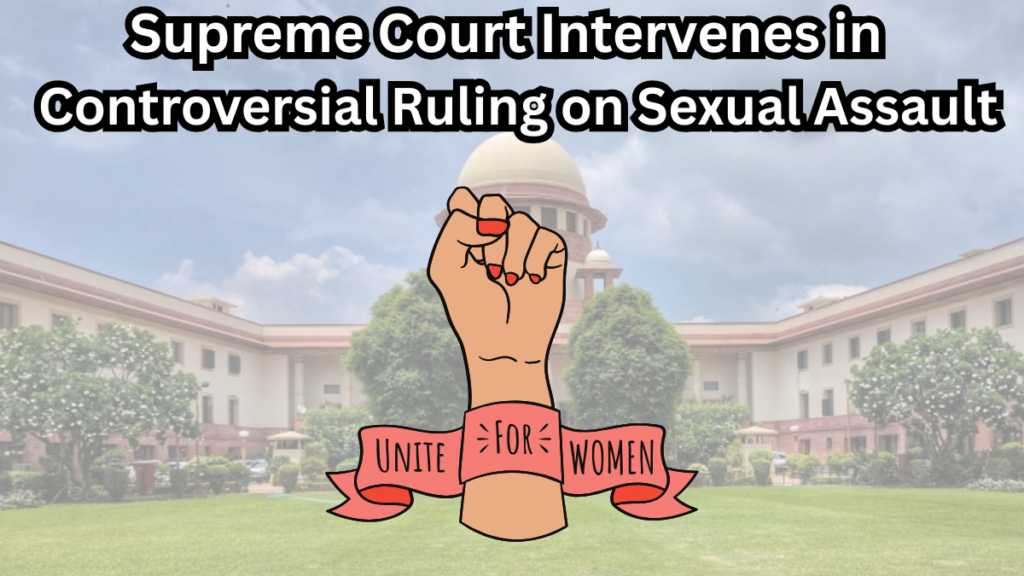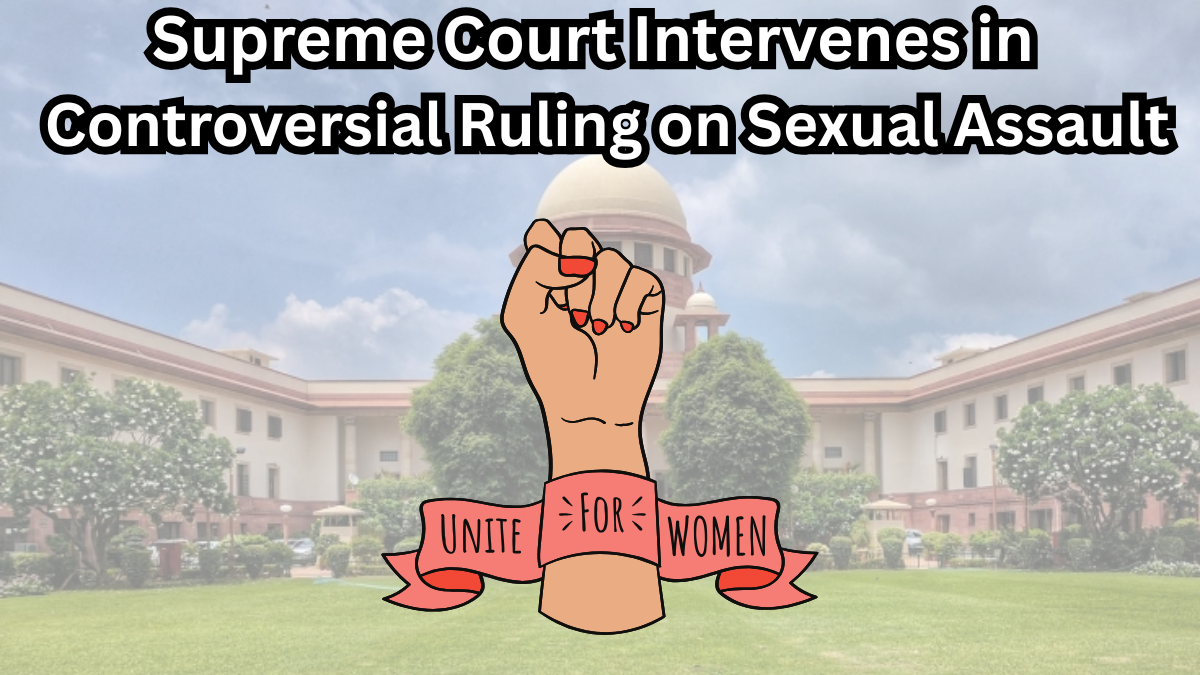India’s Supreme Court has stepped in by temporarily halting a highly debated decision made by the Allahabad High Court. The lower court’s ruling stated that “grabbing the breasts” of a minor and breaking her lower garment’s drawstrings could not be considered an attempt to rape. This decision ignited nationwide outrage and raised serious legal and ethical questions about how sexual assault cases, especially those involving minors, are adjudicated in India.

The Supreme Court’s Swift Response
Concerned by the implications of the earlier ruling, a two-judge bench led by Justice BR Gavai and Justice Augustine took immediate action. Their intervention emphasizes the judicial duty to protect victims and ensure that the law is interpreted fairly.
Key aspects of the Supreme Court’s intervention:
-
Judicial Concern: The bench described the previous 17 March judgment as “shocking” and stressed that it was deliberated over four months rather than being an impulsive decision.
-
Government Notifications: Notices have been sent to both the central government and the Uttar Pradesh state government, asking them to review the ruling and offer clarifications.
-
Emphasis on Justice: The move underscores the necessity for legal interpretations to prioritize victim protection and align with the true spirit of justice.
Unfolding of the Disturbing Incident
A deeply distressing case brought into light the vulnerabilities of minors and further highlighted the importance of stringent laws. Here is a clear breakdown of the incident:
Details of the Case:
| Aspect | Details |
|---|---|
| Victim | An 11-year-old girl from a small village |
| Alleged Actions by the Accused | – Offered a lift under the guise of help – Stopped midway and committed the assault – One of the accused allegedly grabbed the girl’s breasts and broke the drawstrings of her lower garment |
| Victim’s Response | The girl’s desperate screams for help led villagers to intervene, forcing the attackers to flee |
| Allegation Status | Although the accused denied the charges, the prosecution emphasized both physical evidence and the victim’s testimony |
This case is a reminder of the critical need to protect young children from sexual violence, ensuring that every legal nuance translates into robust protection for vulnerable victims.
The Controversial Reasoning by the High Court
The Allahabad High Court classified the accused’s actions as “aggravated sexual assault” rather than an “attempt to rape.” The rationale was premised on the claim that breaking a drawstring did not provide concrete evidence of an act beyond mere preparation.
Key points from the High Court’s reasoning:
-
Legal Interpretation:
-
The court argued that an “attempt to rape” requires actions that go beyond preparatory measures.
-
Breaking of the lower garment’s drawstring was seen as insufficient evidence of a full attempt to commit rape.
-
-
Criticism of the Ruling:
-
Many legal experts argue that this line of reasoning minimizes the psychological trauma and terror experienced by the victim.
-
The decision raised broader questions about the interpretation of “intent” in cases of sexual assault.
-
Nationwide Backlash and Call for Justice
The high-profile judgment did not go unnoticed. Activists, legal experts, and government officials across the country expressed their deep concern and discontent.
Notable reactions include:
-
Senior Lawyer Indira Jaising:
-
Argued that the nature of the assault clearly exceeded mere preparation and should legally be considered an attempt to rape.
-
Highlighted that isolating the victim was a demonstration of intent to commit a full assault.
-
-
Government Officials:
-
Women and Child Welfare Minister Annapurna Devi labeled the ruling as unacceptable, noting its potential to damage public trust in the justice system.
-
-
Advocacy Groups:
-
Women’s rights and child protection organizations have mobilized, demanding a comprehensive review of the law to better safeguard survivors.
-
What Lies Ahead: The Road to Justice
The Supreme Court’s decisive action marks only the beginning of a broader legal and societal reckoning.
Possible next steps include:
-
Supreme Court Review:
-
A thorough review of the Allahabad High Court’s reasoning with the possibility of overturning the controversial decision.
-
-
Legal Reforms:
-
The government might consider redefining what constitutes an “attempt to rape” under current statutes.
-
-
Strengthening Victim Support:
-
Enhancing legal provisions and support structures for minors, ensuring swift and sensitive handling of sexual violence cases.
-
Frequently Asked Questions (FAQs)
1. What prompted the Supreme Court’s intervention in this case?
The Supreme Court intervened after the Allahabad High Court ruled that certain acts during the assault did not legally qualify as an attempt to rape. The decision raised serious concerns about the judicial interpretation of sexual assault laws and the protection of minors.
2. How did the Supreme Court describe the original judgment?
The two-judge bench, led by Justice BR Gavai and Justice Augustine, described the judgment as “shocking” and expressed deep concern, particularly because the judgment was not made impulsively but after being reserved for four months.
3. What are some of the main criticisms of the High Court’s ruling?
Critics argue that the ruling minimizes the gravity of the assault, fails to acknowledge the psychological trauma inflicted on the victim, and sets a dangerous precedent that might undermine future legal proceedings in sexual assault cases.
4. What steps might follow after this temporary halt by the Supreme Court?
Following this halt, the Supreme Court’s review may lead to either an overturning of the decision or further directives. Additionally, there could be discussions on legal reforms to ensure a stricter and clearer definition of “attempt to rape” under Indian law.
Click here to learn more
